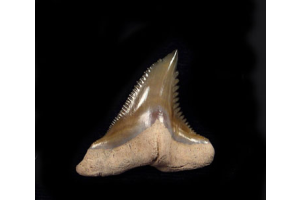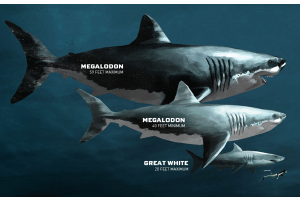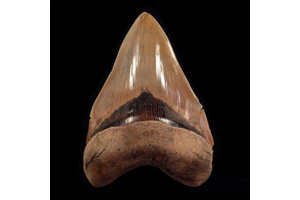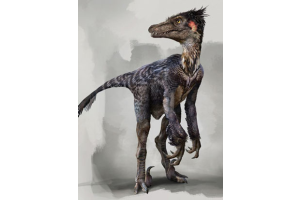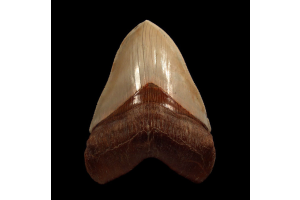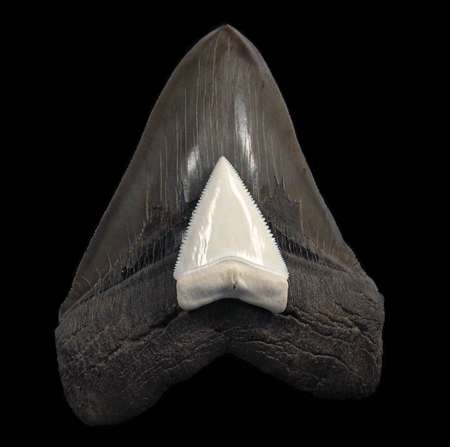
The swirling depths of our blue planet have always been rife with mysteries. One captivating narrative that has enthralled marine enthusiasts is the evolutionary tale of two oceanic juggernauts: the Megalodon and the Great White Shark. While both are famed for their predatory might, the intrigue intensifies when we compare the megalodon tooth vs great white tooth.
The Megalodon: Nature's Subaqueous Leviathan
The Megalodon, often dubbed the 'monarch of the seas,' is the stuff of legend. Although much of its history remains shrouded in the mists of time, the megalodon tooth offers tantalizing clues.
Dimensions and Design: These colossal chompers could dwarf any modern shark tooth, sometimes spanning over 7 inches. Their expansive, v-shaped structure, lined with jagged ridges, paints a vivid picture of a creature designed to effortlessly snare and slice through gargantuan prey.
Global Footprint: The widespread discovery of megalodon teeth, from tropical coasts to icy shores, paints a panorama of a creature that once had the oceans at its beck and call.
The Great White: Today's Marine Maestro
Today's oceans may not boast the Megalodon, but they are far from devoid of awe-inspiring predators. Enter the Great White Shark. The great white tooth is a testament to this creature's remarkable adaptability and prowess.
Contours and Characteristics: Typically measuring 2-3 inches, these teeth, while less imposing than the Megalodon's, are no less impressive. Their sleek, tapering form is a testament to evolution's finesse, optimized for swift strikes and precision.
Geographical Glimpses: While Great Whites patrol waters across the globe, their teeth often surface in sun-kissed waters, indicating their preference for temperate zones.
Dental Duel: Megalodon Tooth vs Great White Tooth
Pitting the megalodon tooth vs great white tooth is more than a mere comparison; it's an exploration into the heart of evolution:
The Scale Spectrum: The size disparity is glaring. Megalodon teeth could dwarf their Great White counterparts, underscoring the sheer physical dominance of the ancient behemoth.
Functionality Focus: The Megalodon's broad, serrated teeth suggest a predator that feasted on the ocean's behemoths, while the streamlined teeth of the Great White indicate a diet comprising agile, swift-moving prey.
Temporal Travels: The Megalodon's reign is chronicled from roughly 23 to 3.6 million years ago. The Great White, younger in the evolutionary timeline, emerged around 16 million years ago and continues to grace our oceans with its majesty.
Conclusion
Through the lens of the megalodon tooth vs great white tooth debate, we journey across epochs, witnessing the grand tapestry of marine evolution. While the Megalodon's era has been consigned to history's annals, the Great White remains, a sentinel of the seas, a living testament to nature's timeless tales.






